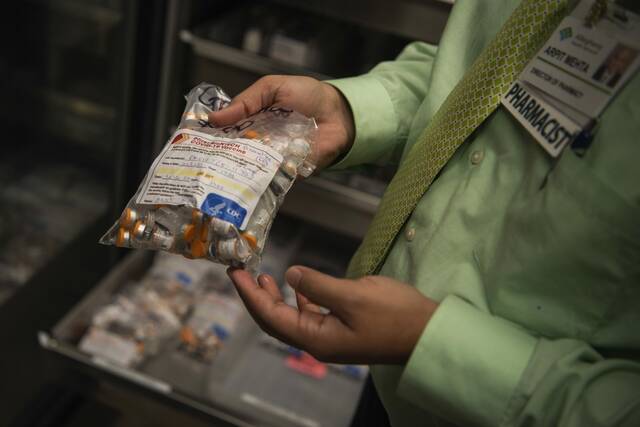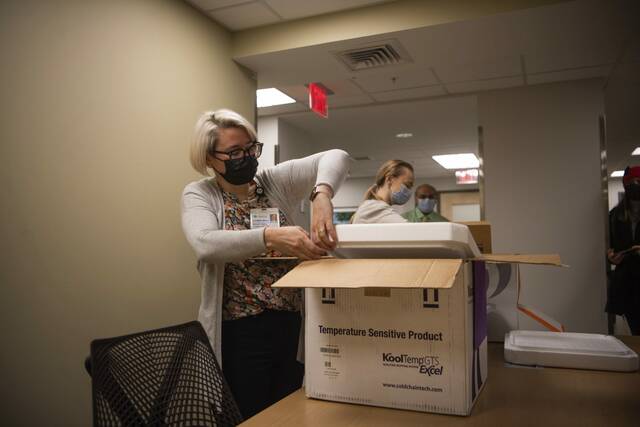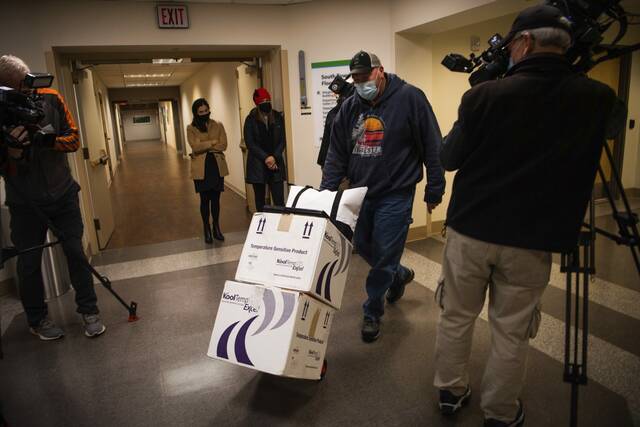5 things to know as covid vaccinations begin for young children
Children across the country are cleared to begin receiving child-sized doses of the Pfizer covid-19 vaccine after getting the recommendation from adviser at the Centers for Disease Control and Prevention followed by the green light by director Dr. Rochelle Walensky.
The shots – one-third the dose that adults and older kids gets – have been hailed as a milestone by health officials, and something that will bring the country one step closer to that pre-pandemic normalcy. Shipments of the vaccine began arriving Thursday at Allegheny General Hospital in Pittsburgh around 6:30 a.m.
Dr. Joe Aracri, chairman of the pediatric institute at Allegheny Health Network, and Dr. Mike Green, a physician at UPMC Children’s Hospital of Pittsburgh in the pediatric infectious disease division, answered questions about how the vaccines reached emergency authorization and what parents – and children – can expect.
Question: What was the process to get the vaccine to the point of approval by the CDC on Tuesday?
Aracri: “Originally the study was expanded to include more subjects under the direction of the FDA. When Pfizer completed its study, they submitted their research, which was based on 2,000 kids that got the vaccine. They submitted it to the FDA, the panel at the FDA reviewed it and they thought that, first, it was effective and second, that it was safe to give to this population. The FDA then handed it over to the CDC, which made the recommendation last night.”
Green: “Bio-vigilance is going to continue after authorization both to determine the benefit of the vaccine – that is, how well does it protect against infection, how well does it protect against the spread of infection – but also very close attention to the potential side effects.”
Q. How does the vaccine dosage for kids 5 to 11 differ from the dose given to adults and older children?
Aracri: “This population has a special vial that is different than the adult vial. The dose is one-third of the adult dose, but it has to be given out of the pediatric dose. So we can’t just give one-third of the adult dose, we have to give the dose out of the pediatric vial.”
Children, like adults, need two doses of the Pfizer vaccine given three weeks apart.
Q. What about side effects?
Aracri: “Exact same side-effect profile as we saw in the 12 and up population.”
Green: “There’s a lot of concern about this vaccine-associated myocarditis that has been seen in some mainly older teenagers and young adults, mainly males, who have gotten the mRNA vaccine, either Pfizer or Moderna. It’s been seen less frequently in the 12- to 15-year-old age group. The teenage years are an age group that is predisposed to myocarditis biologically. So there’s great hope that, biologically, these younger children are less prone to it.”
Q. What will availability look like? Where can parents turn to schedule vaccinations for their children?
Aracri: “I think there’s going to be an initial surge in the first week or two weeks. Parents are very concerned and want to make sure their kids get immunized as soon as possible. I think once we get past the initial surge, I think it will be very easy to get a vaccine.
“The best thing to do is contact your pediatrician or health care provider.”
Officials with retail drug stores and pharmacies like Walgreens, CVS and Rite Aid have said appointments for children aged 5 to 11 will begin this weekend.
Q. Why is it important for children to get vaccinated if they don’t often get severely ill?
Aracri: “We know that in this population kids don’t get as sick as the elderly do with it. However, some kids do get significantly ill with covid. More importantly, it’s important to get the vaccine in order to protect your family, your school and your community and help us get out of this pandemic and get back to normal.”
Green: “Covid-19 has become the No. 8 cause of death in the age group we’re talking about – so in 5 to 11 year olds, the pandemic virus is the No. 8 cause of death. And it’s a more common cause of death than influenza, which has had vaccine recommendations in place for this age group for a long time. … There have been 600 children across the United States who’ve died during the pandemic. You can say that that’s not a very big number compared to the hundreds of thousands of deaths we’ve had in the country overall, but just imagine if it was your child or your grandchild – and it’s a preventable disease.”
Remove the ads from your TribLIVE reading experience but still support the journalists who create the content with TribLIVE Ad-Free.




